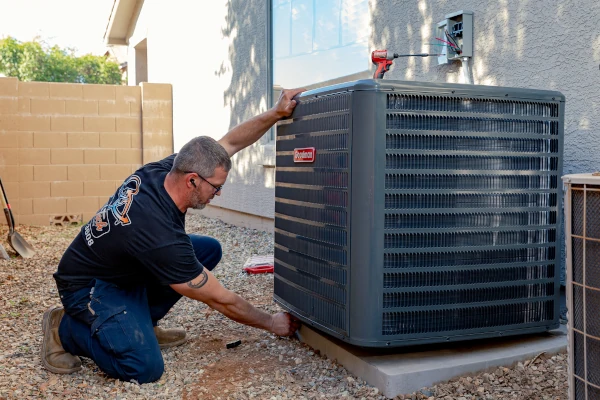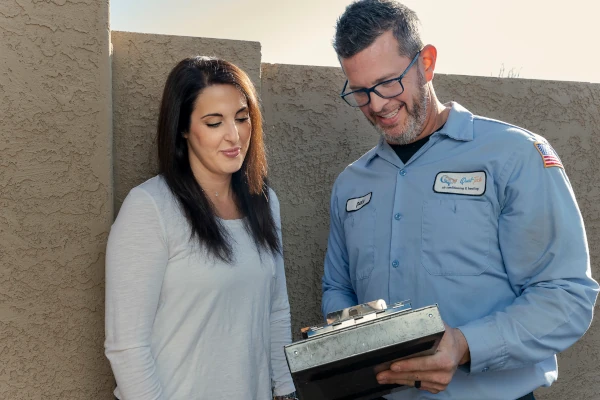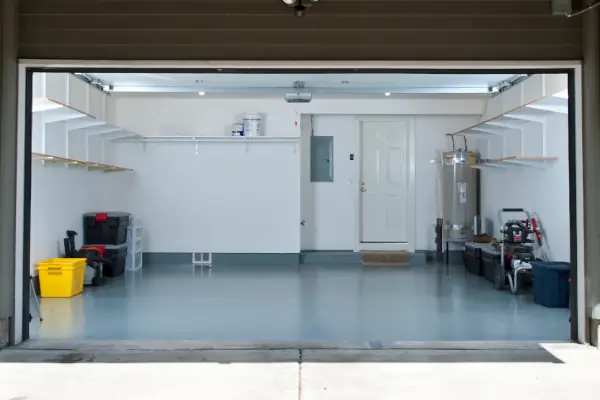When it comes time to replace your HVAC system, one of the first questions most homeowners ask is, “How much can I actually save on my electric bill?” The answer depends on several factors, but efficiency is always at the center of the conversation.
This article explores what influences AC energy savings in Arizona, how to estimate them, and the role of maintenance in protecting your investment.
What Impacts Saving With A New AC?
 Key factors include:
Key factors include:
Age of your current unit: Older systems are less efficient and offer greater potential savings when replaced.
SEER rating of the new unit: Higher SEER units consume less energy, reducing monthly bills.
Size and layout of your home: Larger or poorly insulated homes may require more energy to cool.
Local energy costs and climate: Hotter climates and higher electricity rates increase potential savings.
What Kind of Savings Can I Expect From A New System?
New HVAC units offer a wide range of efficiency, which directly impacts potential electricity savings:
14–15 SEER (standard efficiency): About 25–30% savings compared to an older 10–15-year-old unit.
16–17 SEER (mid-range efficiency): Approximately 35–40% savings on your electric bill.
18–20+ SEER (high-efficiency models): Up to 50% or more in savings, especially if upgrading from a very old system.
When comparing two systems, it’s important to remember that SEER and SEER2 aren’t directly equivalent. A unit rated at 16 SEER under the old standard may perform closer to 14–15 SEER2 under the new testing procedures. This means that while the advertised savings based on SEER might look higher, SEER2 gives a more realistic picture of what you can expect on your electric bill. Always check which standard the efficiency rating uses so you can make an accurate comparison between units and choose the system that will deliver the best long-term savings for your home.
A well-maintained 18 SEER system could save around $40,000 over 15 years, with a $500 electric bill. These numbers assume the old system would have lasted the full 15 year period, though in reality it likely wouldn’t. The saving over 5 years would be around $15,000, which is likely more realistic.
Using SEER Calculators
 Estimating potential savings from a new HVAC system is much easier with online tools and calculators. These tools help you see how different efficiency levels will impact your energy costs before making a purchase.
Estimating potential savings from a new HVAC system is much easier with online tools and calculators. These tools help you see how different efficiency levels will impact your energy costs before making a purchase.
To use them, you typically input:
Your current system’s SEER rating
The size of your home
Your average monthly electric bill
Then, you enter the SEER rating of the new unit you’re considering. The calculator can provide:
Estimated percentage reduction in energy use
Projected annual savings on your electric bill
Adjustments based on local energy costs and climate conditions
These tools give a clear, practical way to compare options and make informed decisions about efficiency upgrades.
Is It Worth Getting A New AC For The Savings?
Deciding whether to replace your HVAC system isn’t just about energy savings. Upfront costs, your current unit’s age, and how long you plan to stay in your home all influence whether an upgrade is worthwhile.
Upfront Cost
One of the biggest considerations when replacing an HVAC system is the upfront cost. High-efficiency units, especially those in the 18–20+ SEER range, can have significantly higher purchase and installation prices than standard models.
Certain circumstances can help offset this expense:
Available manufacturer or utility rebates and incentives
Tax credits for energy-efficient upgrades
Financing options or payment plans
Conversely, the cost can feel more burdensome if your home requires extensive ductwork modifications, electrical upgrades, or if installation is complex due to home layout or limited access to the unit. These factors can increase both labor and material expenses.
Current Unit Age
 The age of your current HVAC system plays a major role in deciding whether to replace it. Most units last around 10–15 years, and as they get older, they tend to lose efficiency, require more frequent repairs, and may not keep your home as comfortable.
The age of your current HVAC system plays a major role in deciding whether to replace it. Most units last around 10–15 years, and as they get older, they tend to lose efficiency, require more frequent repairs, and may not keep your home as comfortable.
If your system is nearing the end of its expected lifespan, upgrading to a newer, high-efficiency model can provide immediate energy savings and reduce the risk of unexpected breakdowns. On the other hand, a relatively new unit may still have several years of reliable service left, making replacement less urgent.
How Long You Plan To Stay In Your Home
How long you plan to stay in your home is a key factor in deciding whether to invest in a new HVAC system. High-efficiency units often come with higher upfront costs, but the energy savings accumulate over time.
Short-term stay (5 years or less): You likely won’t recoup the full cost of a top-tier system before moving.
Long-term stay (7–10+ years): Upgrading to a more efficient unit can deliver substantial savings on your electric bills and improve comfort for years to come.
Understanding your timeline helps determine which efficiency level makes the most financial sense.
The Role of Maintenance In Keeping Your System Efficient
 Even the most efficient HVAC system won’t deliver maximum savings if it isn’t properly maintained. Regular upkeep helps the unit operate at peak performance, prevents costly breakdowns, and extends its lifespan.
Even the most efficient HVAC system won’t deliver maximum savings if it isn’t properly maintained. Regular upkeep helps the unit operate at peak performance, prevents costly breakdowns, and extends its lifespan.
Simple tasks like changing air filters, keeping the outdoor unit clear of debris, and checking for airflow issues can have a significant impact. Professional maintenance, including refrigerant checks, cleaning coils, and inspecting electrical components, ensures your system runs efficiently year-round. Without consistent care, efficiency drops, energy bills rise, and your upfront investment in a high-SEER unit may not pay off as expected. Proper maintenance protects both comfort and savings.
In terms of numbers, a well-maintained 18 SEER system could save around $40,000 over 15 years, while a neglected system might only save $33,000. Additionally, a neglected system may need to be replaced faster than a well maintained one.
Upgrading to a new HVAC system can deliver impressive savings—often 25% to 50%—while also improving comfort and reliability. The exact benefit depends on factors like the efficiency rating you choose, the age of your current unit, and how long you plan to remain in your home. While upfront costs may seem steep, rebates, long-term savings, and better performance often make the investment worthwhile. Just remember, those savings depend on proper maintenance to keep your system running efficiently. By weighing costs, lifespan, and energy goals, you can choose the right unit to maximize comfort and value for years ahead.





